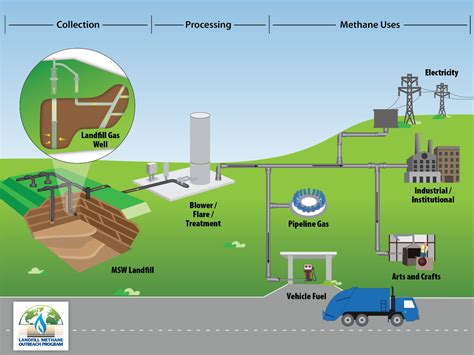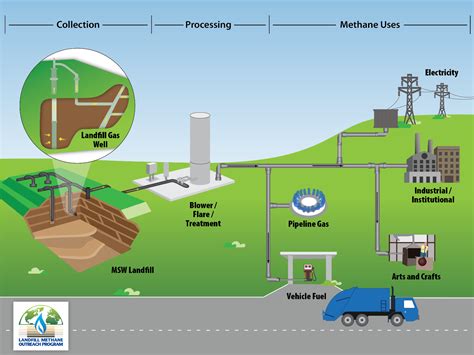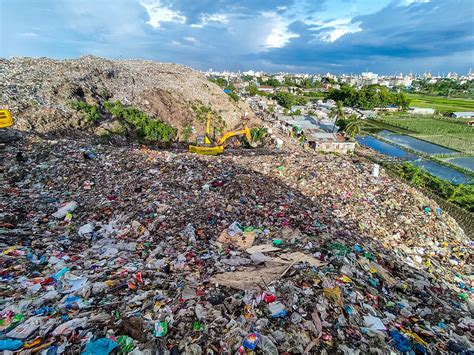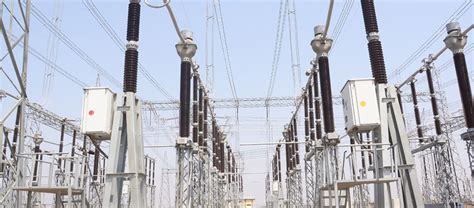As the world continues to grapple with the challenges of climate change, energy security, and waste management, innovative solutions are emerging to address these interconnected issues. One such solution is the utilization of landfill gas, a byproduct of waste decomposition in landfills, as a source of energy. This approach not only reduces the environmental impact of landfills but also provides a clean and reliable source of power for homes and businesses. In this article, we will delve into the specifics of how landfill gas powers homes, exploring the technological, economic, and environmental aspects of this energy solution.
Key Points
- Landfill gas is a renewable energy source that can be harnessed to generate electricity and heat.
- The process of capturing and utilizing landfill gas involves several steps, including collection, processing, and distribution.
- Landfill gas can power homes through various methods, including direct use, electricity generation, and heat production.
- The economic benefits of landfill gas energy include reduced greenhouse gas emissions, lower energy costs, and job creation.
- Despite its benefits, landfill gas energy also faces challenges such as high upfront costs, technical complexities, and regulatory hurdles.
Understanding Landfill Gas

Landfill gas is produced as waste decomposes in landfills, releasing a mixture of gases, primarily methane and carbon dioxide. Methane, a potent greenhouse gas, is the main component of landfill gas, accounting for approximately 50% of its volume. The collection and utilization of landfill gas not only reduce the emission of methane into the atmosphere, where it contributes to climate change, but also provide a valuable energy resource. The Environmental Protection Agency (EPA) estimates that landfill gas projects can reduce greenhouse gas emissions by 115 million metric tons of carbon dioxide equivalent, which is equivalent to taking 23 million cars off the road.
Collection and Processing of Landfill Gas
The first step in utilizing landfill gas as an energy source is its collection. This involves drilling wells into the landfill and using a system of pipes and blowers to extract the gas. The collected gas is then processed to remove impurities and increase its energy content. This processing can involve the removal of moisture, hydrogen sulfide, and other contaminants, as well as the compression of the gas to a pressure suitable for distribution and use. For instance, the Los Angeles County Sanitation District’s landfill gas project in California uses a complex system of wells, pipes, and processing facilities to collect and process over 10 million cubic feet of landfill gas per day.
Methods of Utilizing Landfill Gas for Powering Homes
There are several methods through which landfill gas can be used to power homes. These include:
- Direct Use: Landfill gas can be directly used as a fuel for heating homes and water. It can be distributed through pipelines to nearby homes and businesses, providing a clean and efficient source of energy.
- Electricity Generation: Landfill gas can be used to generate electricity through internal combustion engines or gas turbines. The electricity produced can then be fed into the grid, powering homes and businesses.
- Heat Production: In addition to electricity generation, landfill gas can also be used for heat production through combined heat and power (CHP) systems. These systems generate both electricity and heat, which can be used for heating homes and providing hot water.
| Method | Description | Benefits |
|---|---|---|
| Direct Use | Landfill gas used as a fuel for heating | High efficiency, reduced greenhouse gas emissions |
| Electricity Generation | Landfill gas used to generate electricity | Renewable energy source, job creation |
| Heat Production | Landfill gas used for heat production through CHP systems | Increased energy efficiency, reduced energy costs |

Economic and Environmental Benefits

The economic benefits of utilizing landfill gas as an energy source are significant. By reducing the amount of methane emitted into the atmosphere, landfill gas projects can help mitigate climate change, thereby avoiding the costs associated with its impacts. Additionally, the generation of electricity and heat from landfill gas can provide a source of revenue for landfill operators and local communities. According to the EPA, the average cost of generating electricity from landfill gas is around $0.05 per kilowatt-hour, which is competitive with traditional fossil fuels.
Challenges and Future Directions
Despite the benefits of landfill gas energy, there are several challenges that need to be addressed. These include high upfront costs, technical complexities, and regulatory hurdles. Furthermore, the long-term sustainability of landfill gas as an energy source depends on the continued production of waste and the ability to capture and utilize the gas efficiently. However, with advancements in technology and policy support, the potential for landfill gas to contribute to a cleaner, more sustainable energy future is substantial. For example, the city of Vancouver has set a goal to become 100% renewable by 2050, with landfill gas playing a key role in achieving this target.
What is landfill gas, and how is it produced?
+Landfill gas is a mixture of gases, primarily methane and carbon dioxide, produced as waste decomposes in landfills. The decomposition process occurs in the absence of oxygen, leading to the formation of these gases.
How is landfill gas collected and processed for use as an energy source?
+Landfill gas is collected through a system of wells and pipes, and then processed to remove impurities and increase its energy content. This processing can involve the removal of moisture, hydrogen sulfide, and other contaminants.
What are the economic benefits of utilizing landfill gas as an energy source?
+The economic benefits include reduced greenhouse gas emissions, lower energy costs, and job creation. Landfill gas projects can also provide a source of revenue for landfill operators and local communities.
In conclusion, the utilization of landfill gas as an energy source presents a promising solution to the challenges of energy security, waste management, and climate change. Through its collection, processing, and use in various applications, landfill gas can provide a clean, efficient, and reliable source of power for homes and businesses. As the world moves towards a more sustainable energy future, the role of landfill gas in contributing to this transition cannot be overstated. With continued innovation, policy support, and investment, the potential of landfill gas to power homes and drive economic growth is significant, offering a beacon of hope for a cleaner, more sustainable tomorrow.



